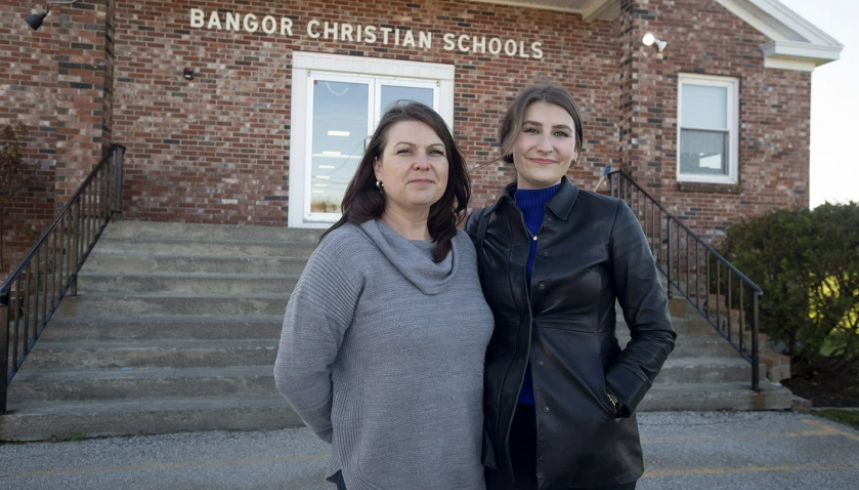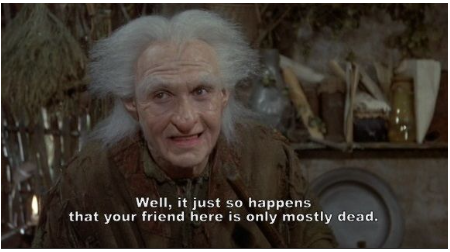
Blaine Amendments prohibiting the public support of religious schools, once used to bludgeon school choice supporters during legislative debates, is dead.
 Or, at least mostly dead.
Or, at least mostly dead.
A 6-3 ruling by the U.S. Supreme Court Tuesday determined that states cannot prohibit religious schools from participating in public benefit programs because they teach religious things.
Carson v. Makin follows a long line of decisions prohibiting states from interfering with, discriminating against or even promoting one religion over another. The 2020 Espinoza decision declared, “A State need not subsize private education. But once State decides to do so, it cannot disqualify some private schools solely because they are religious.”
Despite that ruling, Maine continued to prohibit religious schools from participating in a state program that allowed public dollars to pay for private school tuition. Lawyers for Maine argued that the state was complying with Espinoza because the prohibition wasn’t against the school’s status as a religious institution, but because the religious school taught religious things.
It was a distinction without difference.
“A neutral benefit program in which public funds flow to religious organizations through the independent choices of private benefit recipients does not offend the Establishment Clause,” Chief Justice John Roberts wrote for the Court’s majority.
Roberts went further, explaining that prohibiting religious schools from participating violates the U.S. Constitution’s “Free Exercise” clause:
“The State pays tuition for certain students at private schools – so long as the schools are not religious. That is discrimination against religion. A State’s antiestablishment interest does not justify enactments that exclude some members of the community from an otherwise generally available public benefit because of their religious exercise.”
Supreme Court Justice Sonia Sotomayor, writing a dissenting opinion, argued that the Supreme Court “continues to dismantle the wall of separation between church and state that the Framers built.”
Carson v. Makin, however, follows decades of legal precedents on government neutrality with respect to religion.
In Everson v. Board of Education (1947), the Court defined the Establishment Clause beyond simply establishing a national church by declaring the clause prohibited the aid of one religion or even all religions. But the Court still upheld public bus fare reimbursements to parents sending their children to Catholic schools because the reimbursement was available to all.
Regarding New Jersey’s publicly funded programs, the Court ruled:
“Consequently, it cannot exclude individual Catholics, Lutherans, Mohammedans, Baptists, Jews, Methodists, non-believers, Presbyterians, or the members of any other faith, because of their faith, or lack of it, from receiving the benefits of public welfare legislation.”
Establishment Clause jurisprudence reached its apex with Lemon v. Kurtzman (1971), which created the “Lemon Test” to determine if a program violates the Establishment Clause. The three-part test requires the program to have a secular purpose, to not advance or inhibit any particular religion, and to not excessively entangle government with religion.
In Lemon, the Court allowed state subsidies of textbooks, educational materials and even teacher salaries at private schools in Pennsylvania.
In subsequent decisions over the next half-century, the Court has taken an expanded view of religious liberty, diluting the “Lemon Test” that Justice Antonin Scalia colorfully described in Lamb’s Chapel v. Center Moriches Union Free School District (1993):
“Like some ghoul in a late-night horror movie that repeatedly sits up in its grave and shuffles abroad, after being repeatedly killed and buried, Lemon stalks our Establishment Clause jurisprudence once again, frightening the little children and school attorneys of Center Moriches Union Free School District. …
“The secret of the Lemon test’s survival, I think, is that it is so easy to kill. It is there to scare us (and our audience) when we wish it to do so, but we can command it to return to the tomb at will. When we wish to strike down a practice it forbids, we invoke it; when we wish to uphold a practice it forbids, we ignore it entirely.
“Sometimes, we take a middle course, calling its three prongs ‘no more than helpful signposts.’ Such a docile and useful monster is worth keeping around, at least in a somnolent state; one never knows when one might need him.”
Carson is the fourth significant decision this century to address the Establishment Clause with regard to education choice programs. In Zelman v. Simmons-Harris (2002), the Supreme Court held Ohio’s voucher program was neutral with respect to religion.
In Trinity Lutheran (2017), the Court argued that denying grants for playground resurfacing simply because the institution was religious violated the Free Exercise clause.
Contrary to Sotomayor’s opinion, the latest string of cases probably gets us closer to the Founder’s original intent and further from the confusion over “separation of church and state” that began with Everson in 1947.
It is worth noting that federal and state funds subsidize pre-K and college educations at religious institutions, as well as healthcare at faith-affiliated nursing homes and hospitals. The courts have always treated these options as not violating “separation of church and state” because they provide public benefits (education or care) that just happen to be run by religious organizations.
There is very little public disagreement about these religiously affiliated providers, but neither is there the equivalent of a national teachers union with millions of dollars fighting against them.



[…] This article originally appeared at reimaginED. […]